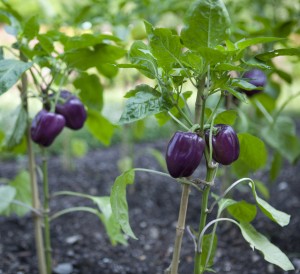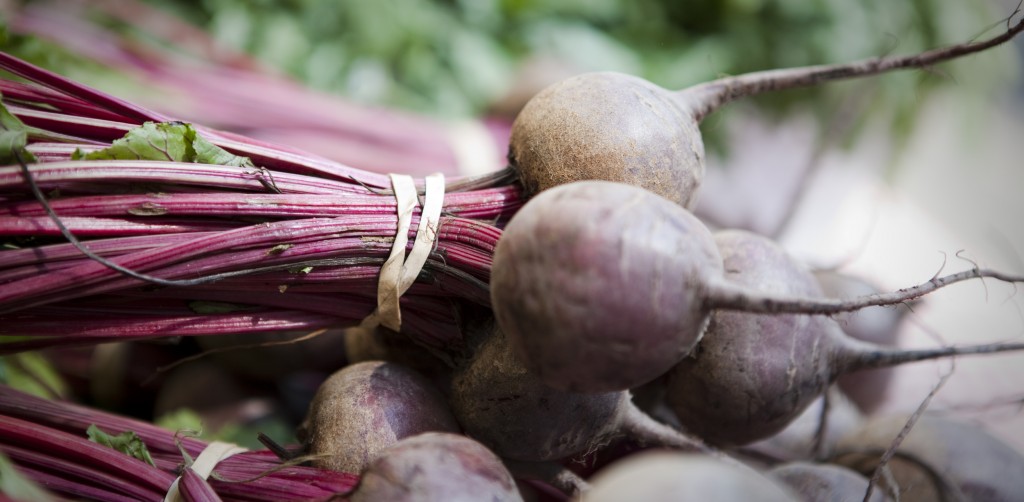Spatially Challenged
Posted in Gardening Tips on May 29 2012, by Sonia Uyterhoeven
Sonia Uyterhoeven is the NYBG‘s Gardener for Public Education.
 Today I would like to tackle a few problems that we commonly encounter in the vegetable garden. How do we maximize space? How do we prevent the feast or famine cycle where we either have nothing to show for our labor, or too much? If you are working with limited space, as most of us are, organizing your vegetable garden in such a way that you maximize productivity and get the right bang for your buck is important. There are several strategies that can help you plan your garden creatively and effectively.
Today I would like to tackle a few problems that we commonly encounter in the vegetable garden. How do we maximize space? How do we prevent the feast or famine cycle where we either have nothing to show for our labor, or too much? If you are working with limited space, as most of us are, organizing your vegetable garden in such a way that you maximize productivity and get the right bang for your buck is important. There are several strategies that can help you plan your garden creatively and effectively.
The first thing we need to do is to take a look at how our vegetables grow. Are we planting a vegetable that will, once it reaches the age of maturity, produce consistently throughout the season? Tomatoes, eggplants, and peppers fall into this category. You will just need to add a few of these vegetables into your garden to get a steady supply throughout the summer. Or are we planting crops that either grow quickly or produce one large harvest? I am thinking now of head lettuce, beets, radishes, carrots and turnips.
One common gardening strategy is called successive cropping. This is when you have a fast-growing crop that you want to stagger so that you have a continuous supply. I did this one year with radishes. I laid out six rows in a corner of my bed. I planted every other row (three rows) and then waited two weeks to plant the remaining three. I staggered the rows to provide the vegetables with maximum growing space: week one (old), week three (young), week one (old)…
Unfortunately, the weather that year worked against me. During the first sowing we had typically cool late March weather. When it came time to sow two weeks later, the temperature had risen to 77F. Both sowings came up approximately at the same time and I had a glut of radishes.
Generally speaking, however, this approach works. I not only do this with vegetables that mature quickly but also with vegetables that start to wear out once they reach maturity. My zucchini always starts to look ratty late in the season, so I plant a hill in May and then wait a month and plant a second one in June. The older plants get torn out as they begin to fade and the younger ones take over production. I also do this with bush beans and nasturtiums.

Succession planting is when one crop replaces another. They are using the same real estate space, but at different times. I do succession planting every year with an early, mid and late season crop. My cool season vegetables get planted in early spring to be replaced by my warm season summer crops. They, in turn, make way for a final, cool season fall harvest.
Succession planting can be best accomplished by starting subsequent crops indoors and transplanting them into the garden. Either the preceding crop can be pulled out to make room for the new crop or the two can be interplanted. Young transplants will not take up much space initially, and can be placed in between an existing crop that will soon be harvested and removed.
Interplanting or catch cropping is when you mix a fast growing crop with a slow growing crop. I do this all the time with lettuces and cabbages in the spring and fall. Cabbages generally take twice as long to mature as lettuce and some grow prodigiously. I alternate rows of lettuce with cabbage, kale, and Swiss chard.
When I harvest lettuce, I alternate, pulling every other head to provide the remaining heads space to grow. When the lettuce is finished, the cabbage and kale will be expanding to take over the space. Toss in a row of onions and you have your ingredients for a savory dish. Next week, we will look more at spacing and timing.

